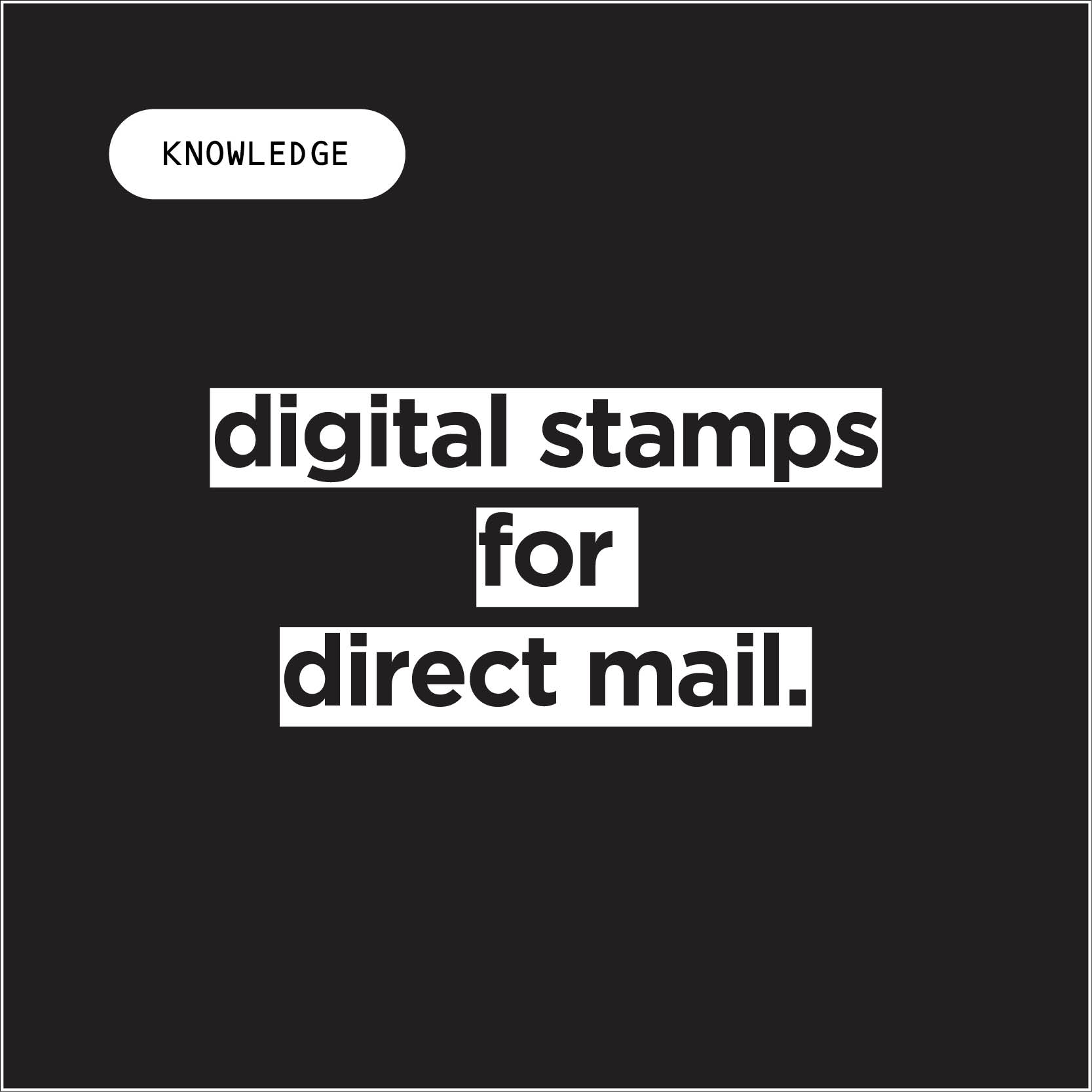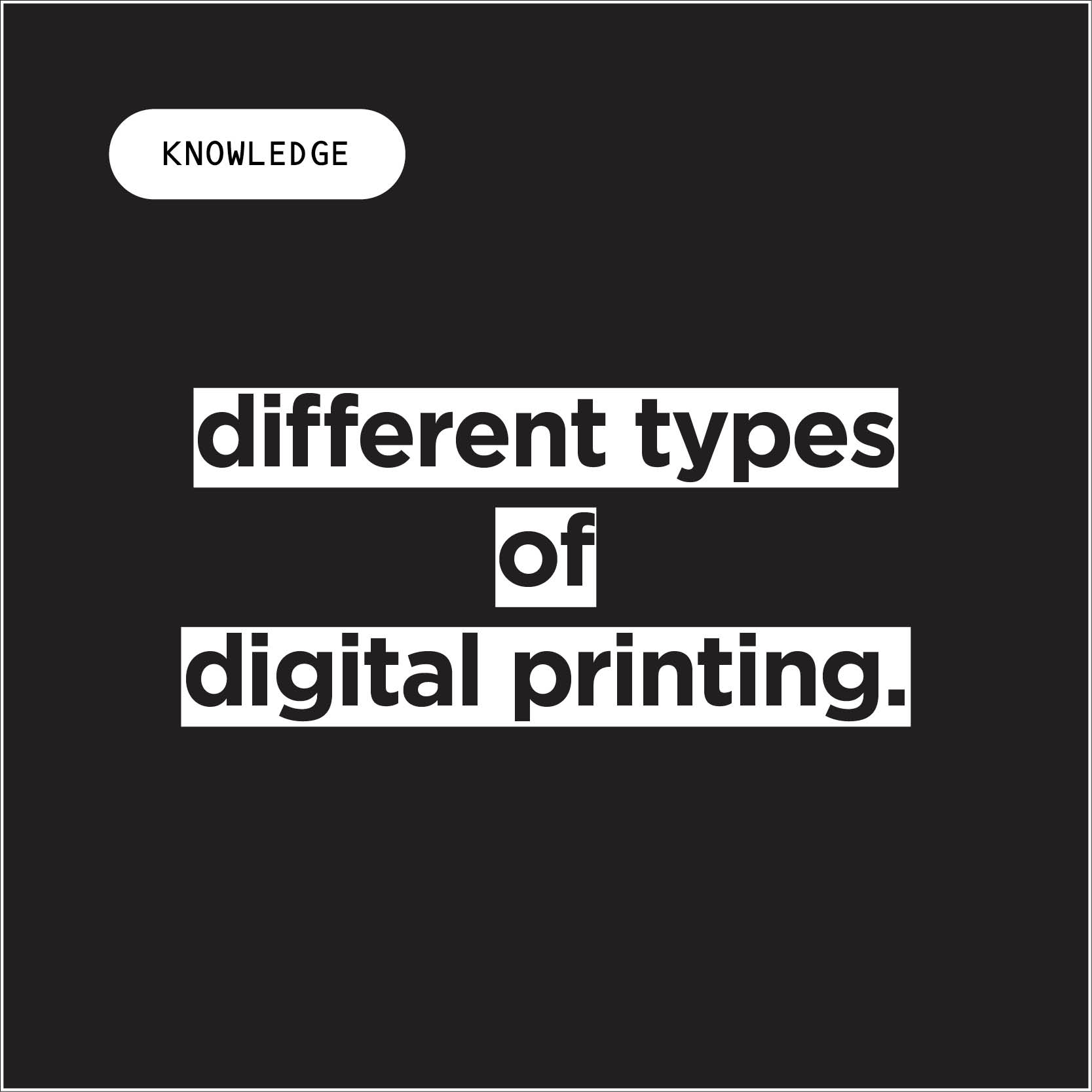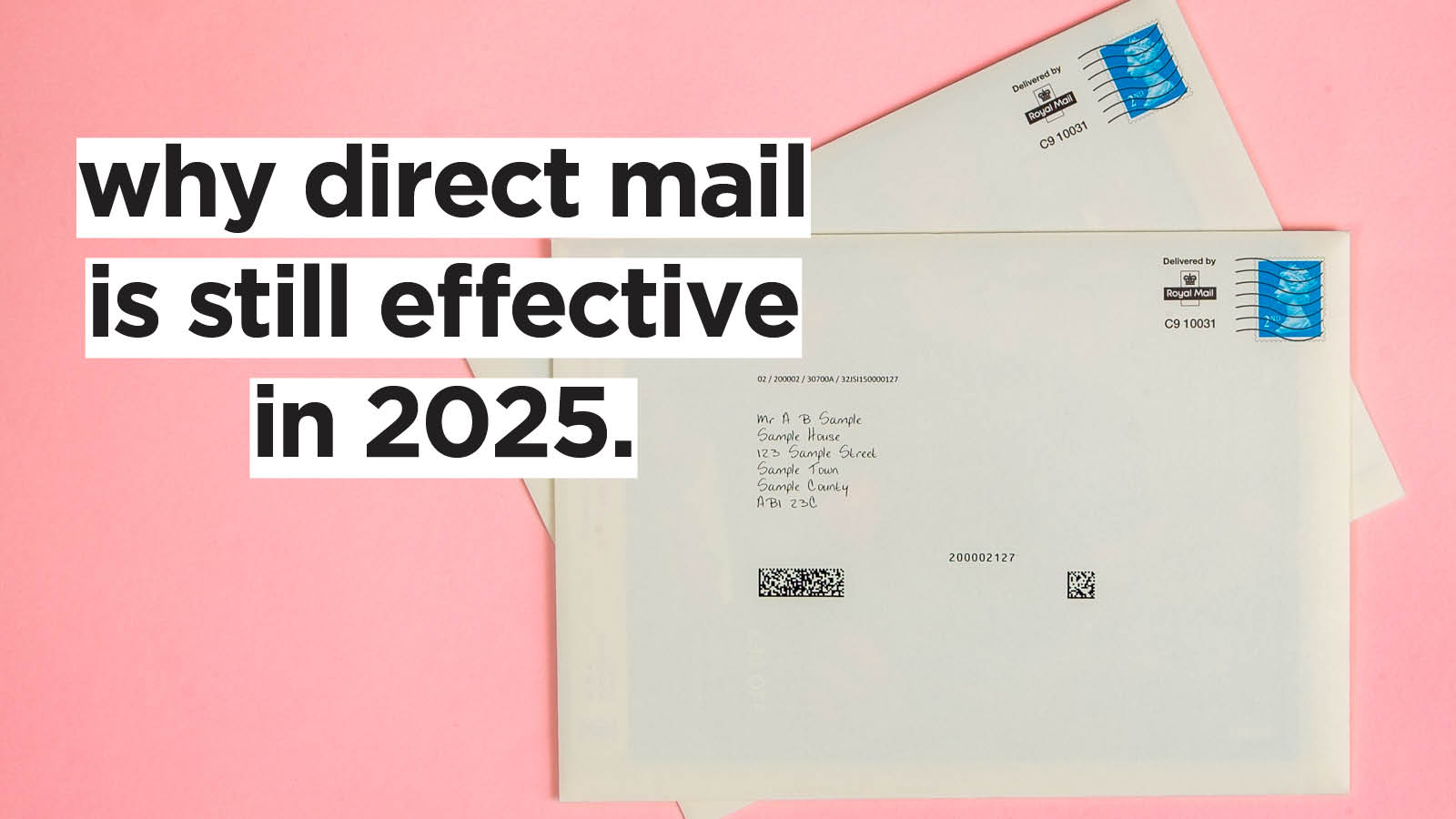
Since the mid-2010s, programmatic digital advertising has become the dominant marketing strategy across all industries. The promise of pinpoint-targeting based on user data, paired with a low barrier to entry and easily-tracked conversions, was sure to revolutionise marketing.
Fast forward to 2025, and digital marketing seems to have lost its lustre. On the one hand, costs per click increase steadily across platforms like Meta and Google; on the other, revenue plateaus and click-through rates stagnate.
On top of that, consumers across the board are experiencing ad fatigue in online spaces, which drives them to seek tangible, meaningful, IRL experiences.
Enter direct mail.
In the digital age, direct mail is uniquely positioned to cut through the noise and deliver exceptional results — especially when used as part of a multichannel campaign.
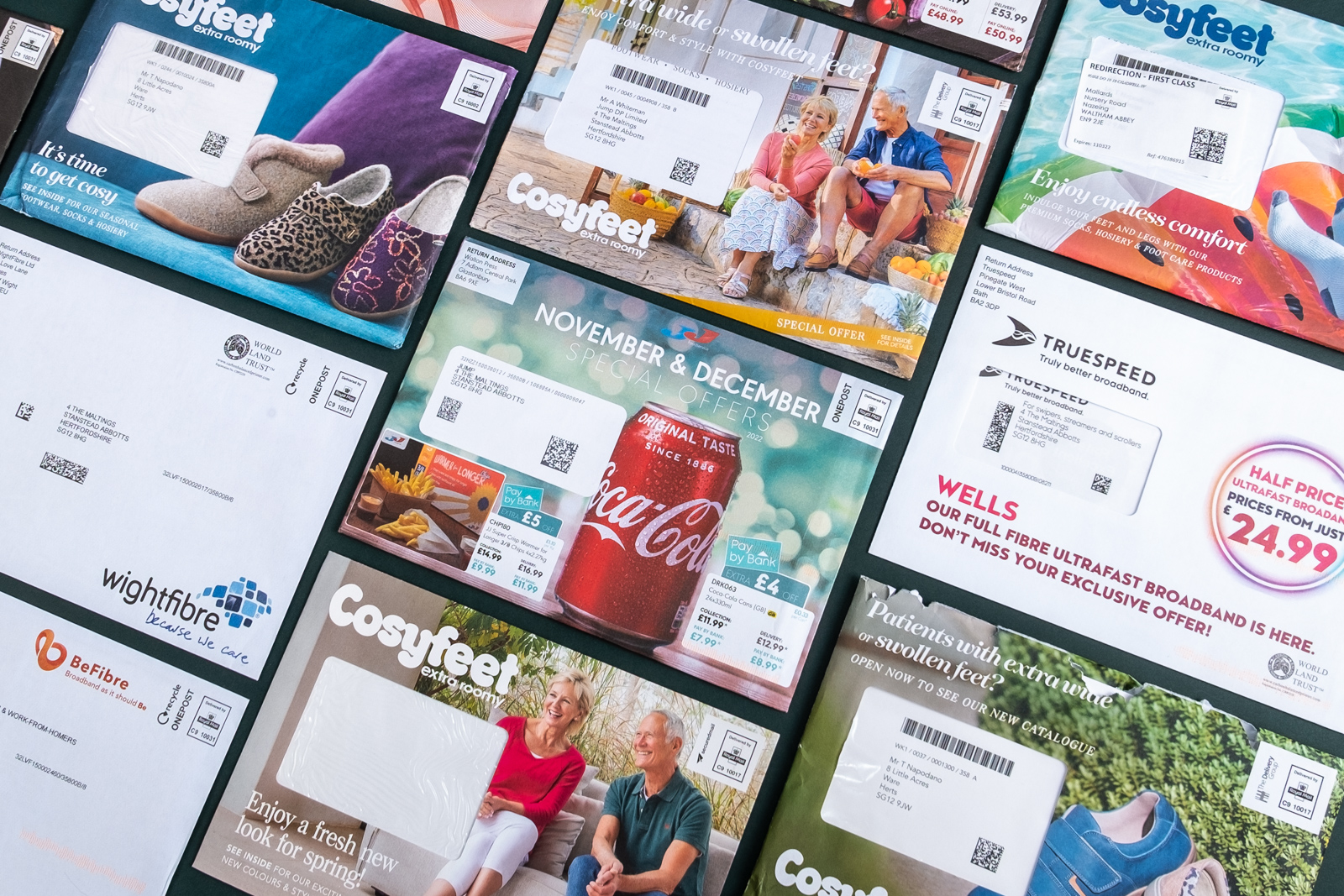
What Is Direct Mail?
We delve deeper into what direct mail is, its benefits, and the roles of design and print within it in this blog post. As a refresher, let’s go over a brief description of what direct mail is.
Direct mail involves delivering physical marketing materials directly to individuals or businesses. This marketing collateral includes letters, postcards, brochures, catalogues, and similar printed items. The three key characteristics of direct mail are:
- Personalisation – The ability to customise messages based on recipient data.
- Targeting – Focusing on specific individuals or addresses, rather than a general approach.
- Tangibility – It offers a physical, tangible object that the recipient can keep and often respond to.
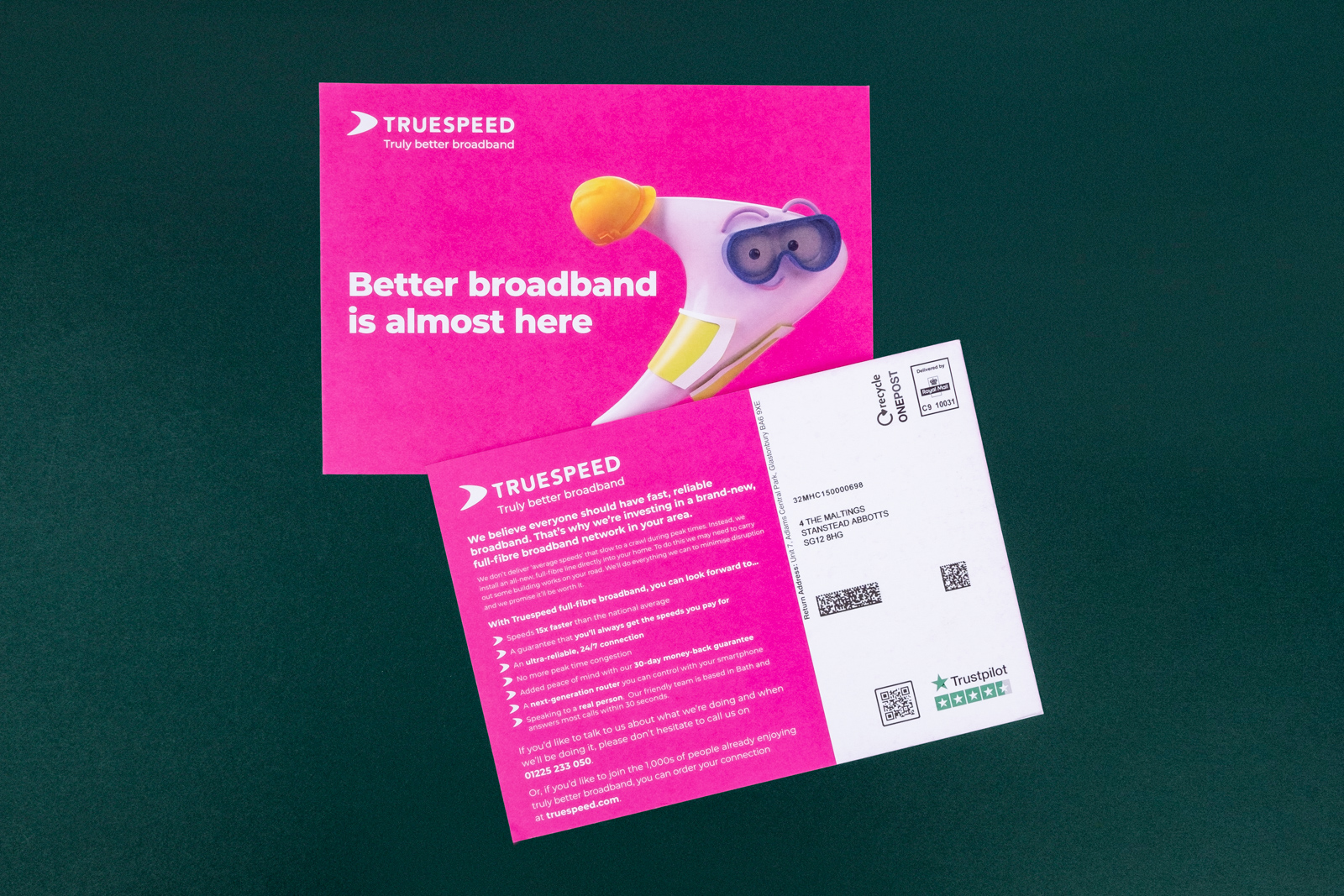
Why It Works
So, why is direct mail still so effective in this predominantly digital era? The answer might be in its tangible and tactile nature. Let’s talk numbers.
- A 2021 study by the Direct Marketing Association (DMA) revealed that 73% of consumers favour direct mail for brand messaging because it allows them to read it at their convenience. Direct mail brings consumer agency back into advertising: users don’t feel “forced” to engage with an unskippable ad or an ephemeral pop-up; instead, they feel empowered to interact with the physical ad on their own terms.
- DMA research shows that direct mail campaigns have a response rate of 4.9%, whereas email campaigns average only 1%. One well-placed mailer is worth almost five spammy emails!
- A 2022 JICMAIL study found that 1,000 households interacted with direct mail for an average of 108 seconds over the course of a month. In contrast, a worldwide survey by Statista found that mobile display ads had an average time-in-view of 14.57 seconds.
- Even the luxury sector favours print over widespread digital outreach. As reported by Walpole, 67% of recipients opened, read, and examined direct mail, door drops, and business correspondence from 15 luxury brands. Luxury is all about the experience: a personalised envelope in the mail will feel much more exclusive than the umpteenth notification on your phone.
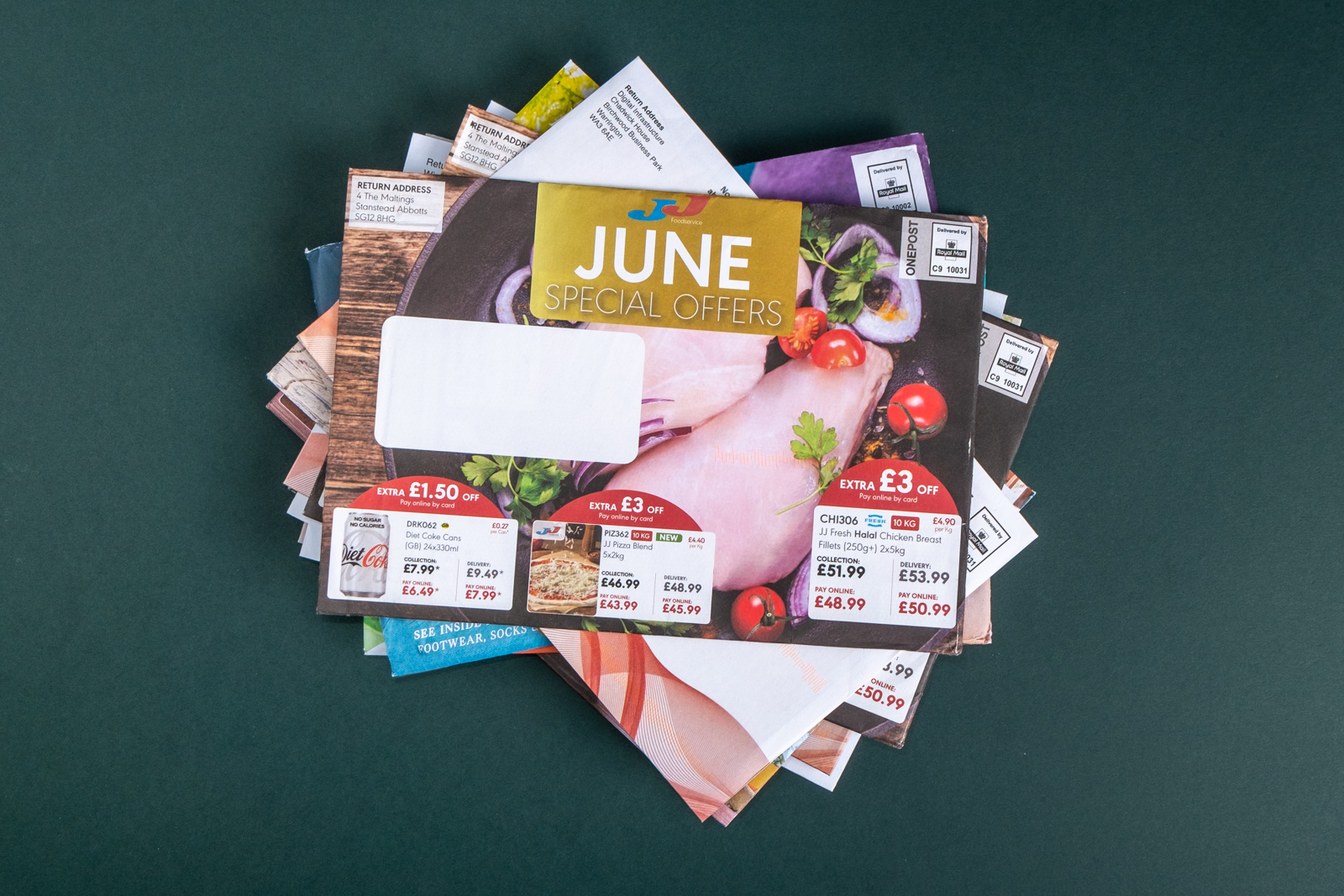
Why Do Direct Mail with Jump
Sustainably speaking, paper often gets a bad rap. According to the British Printing Industries Federation’s research, 40% of Europeans consider paper a wasteful product, and 56% believe that digital communications are more environmentally friendly — however, the print and paper industry accounts for only 0.8% of greenhouse gas emissions.
For modern consumers, sustainability is top of mind; at Jump, we couldn’t agree more. Our direct mail services are always compliant with our ethos of giving back to the planet and our mission of doing no harm. Here’s why you should consider Jump for your next direct mail campaign:
- We’re the first dual-certified B Corp and Carbon Balanced Printer in the world.
- As of 2024, we’re 49% more GHG efficient than the average UK printer.
- We use 100% plastic-free packaging, VOC-free inks, FSC-certified paper, and green energy.

Direct Mail FAQs
1. What kind of response or ROI can I expect from direct mail in 2025?
While results vary across industries, audiences, offers, and execution strategies, these benchmarks can serve as useful references:
- The average response rate for direct mail generally ranges from 2% to 5%. Some sectors, like insurance and retail, can achieve response rates as high as 11–15% under ideal conditions.
- Numerous studies indicate that combining direct mail with digital channels can increase response rates or ROI. For instance, campaigns that integrate mail and digital efforts have demonstrated response-rate increases of approximately 118%. Some reports further suggest that incorporating direct mail can boost ROI by about 18% compared to digital-only campaigns.
Ultimately, your actual outcomes will depend on factors like list quality, message effectiveness, offer appeal, and follow-up strategies.
2. What are the main constraints or challenges to direct mail effectiveness now?
Data quality/address hygiene
48% of marketers report struggling with outdated or incomplete address data.
Targeting precision
Some executives believe that direct-mail targeting still lags digital targeting in precision. In one survey, only 12% reported that their direct mail targeting matched the digital-level effectiveness.
Postal cost inflation and delivery constraints
Rising postal rates, stricter postal regulations, and increasing logistical costs can eat into net returns. The reduction in mail volume can help the remaining mail stand out more, but cost pressures persist.
Measurement/attribution complexity
When direct mail is part of a multichannel strategy, attributing conversion precisely to the mail piece (vs. digital touchpoints) can be tricky.
Creativity and novelty fatigue
If your creative is not compelling, it may fail to stand out.
3. How should I integrate direct mail with digital channels for better results?
Integrated omnichannel campaigns tend to outperform siloed approaches. Some best practices include:
- Use direct mail to “prime” recipients before digital messages (e.g. a postcard that precedes an email or ad). This can improve brand recall and engagement.
- Include digital hooks in mail pieces like QR codes, personalised URLs (PURLs), augmented reality calls to action, and campaign microsites. According to research, 45% of mailings now include digital URLs, while 9% include QR codes.
- Use digital behaviour (clicks, site visits) to retarget with follow-up mail, or vice versa.
- Track conversions across channels to understand attribution (e.g., which customers came from mail vs. digital).
- Use timing sequences (mail → email → follow-up mail) to keep prospects engaged over time.
- With good integration, many marketers report significantly higher campaign lift and ROI compared to using any single channel alone.
4. For which types of campaigns or industries is direct mail most effective in 2025?
Direct mail tends to perform best in certain use cases and industries where tangible, personalised, local, or high-consideration offers are involved:
- Local and brick-and-mortar businesses: Real estate, local retail, auto dealerships, home services (plumbers, electricians, landscapers)… anywhere proximity matters.
- High-value purchases or long decision cycles: Healthcare, financial services, insurance, education — where trust, tactile presence, and credibility are paramount.
- To inspire loyalty, retention, or reactivation: Mailing can yield high response rates where a relationship has already been established — i.e., with existing customers.
- Direct-to-consumer brands wanting brand impact: For brands looking to build awareness or create a premium brand feel through a physical “brand touch.”
- Niche or underserved segments: When digital reach is saturated or overserved, mail can reach people less bombarded by ads.
- Certain campaigns, like product catalogues, sample mailers, coupons, invitations, and subscription offers, are classic mail formats that still tend to work well when executed effectively.
Direct Mail Glossary
- Address Hygiene/NCOA/Data Cleaning: The process of verifying and updating address records to reduce undeliverable mail (e.g. using “National Change of Address” services).
- Caging/Response Processing: The process of handling and processing responses from a direct mail campaign (e.g. returned orders, handling payments, correcting addresses). “Caging” can also include capturing and storing respondent data.
- House List/In-House List: The internal list of prospects, customers, or contacts that you already own and maintain. Typically gives higher yields than cold lists.
- Johnson Box: A small, boxed area (usually at the top of a direct mail letter) that highlights the main offer or key message to grab attention.
- List Rental/List Acquisition: The practice of renting or buying a mailing list (addresses) from a third party so you can send your mail to targets you don’t yet own.
- Mailer/Mail Piece: The physical item sent via postal services (postcards, letters, catalogues, brochures, etc.).
- Opt-Out/Suppression List/Do-Not-Mail: A list or policy of addresses that should not be mailed (e.g. people who asked not to receive promotional mail). Suppression is crucial for ensuring compliance and effective cost control.
- Response Rate: The percentage of mailed pieces that generate a “response” (e.g. inquiry, order, sign-up). It = (Number of responses ÷ Number mailed) × 100%.
- ROI (Return on Investment): A measure of profitability: (Revenue from campaign − Cost of campaign) ÷ Cost of campaign. In direct mail, a strong ROI is often cited when responses exceed cost.
- Square-Inch Analysis: A technique used especially with catalogue or multi-item mailings to allocate revenue (or cost) to each item based on the space they occupy, to optimise page layouts.
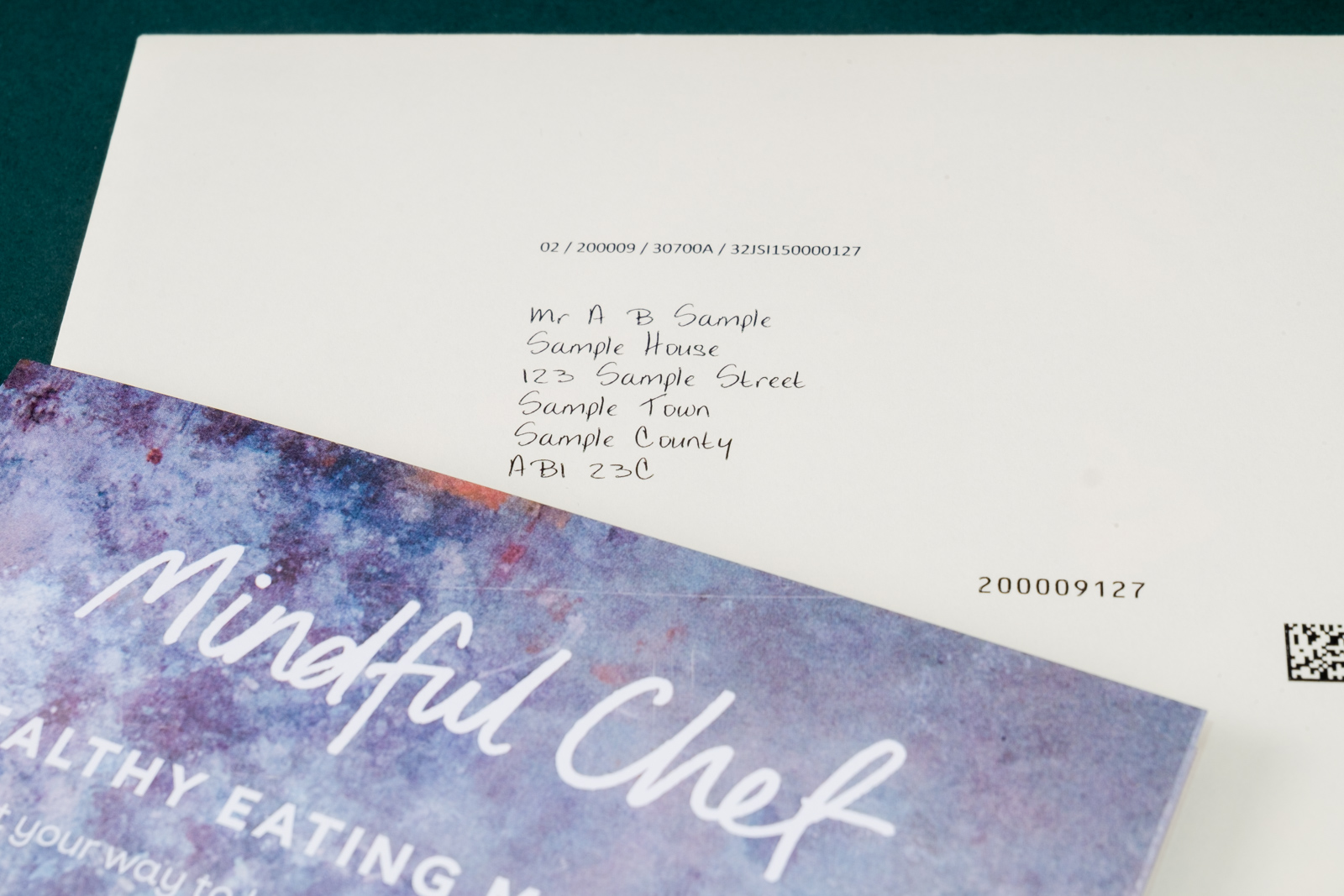
In Short: Why Is Direct Mail Still Effective in 2025?
It’s easy to see how, in 2025, direct mail is as effective as ever. There is something quite powerful about driving your audience awayfrom their phones and engaging with them in real life. At Jump, direct mail isone of our specialities: with plenty of successful campaigns under our belt, we can help revolutionise your marketing strategy — sustainably.
Contact us at hello@wearejump.co.uk for a free quote.
